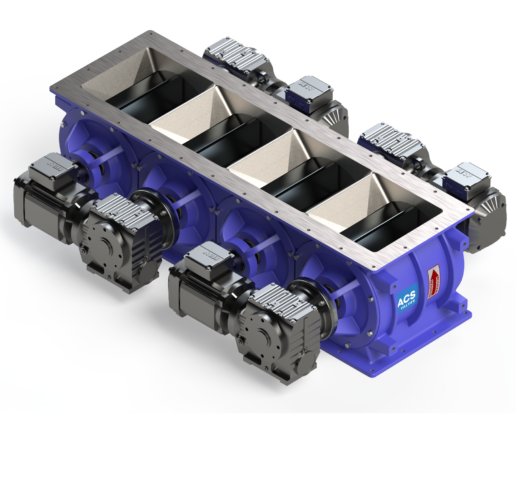 True
True
12" Multi-Port Series
Multi-compartment rotary valve for higher-volume applications or split-line conveying feedsSeparate airlock compartments for improved efficiency, uptime and NFPA compliance. Ideal for high volumes of free-flowing granular material or situations where multiple independent feeds are needed.
Downloads
Datasheet
Features & Benefits:
- Trough-style openings can be designed to fit dust collectors, hoppers, bins, silos and screw conveyors.
- Higher capacity with a smaller overall height for tight space engineered solutions.
- Tighter clearances enable NFPA compliance despite larger capacity outputs (since NFPA clearances can be challenging in larger airlocks).
- With independent drives, issues or a breakdown in one compartment can be contained and allow other compartments to continue operating.
- Common parts in a unique housing mean no special maintenance requirements. Spare parts are readily available (whereas spares for larger airlocks can have a longer lead time).
- Separate airlock compartments allow for intermittent feeds — two, three or four rotors can run simultaneously or independently for multi-line feeds.
- More compact design than other valves of its kind, which reduces stack-up in silos and dust collectors.
- Direct drives in each compartment allow for independent operation.
Options:
- Use to break up large pneumatic conveying systems into smaller, more manageable systems.
- Can be equipped with one elongated blow-through adapter to feed one system or multiple blow-through adapters for different line feeds.
- Equip with one large pressure blower package or several smaller ones for multiple systems.




